- Home
- slideshows
- miscellaneous
- Steve Jobs and Jony Ive, once the two most important people at Apple, are no longer there. Here's how they became the most dominant duo in consumer tech.
Steve Jobs and Jony Ive, once the two most important people at Apple, are no longer there. Here's how they became the most dominant duo in consumer tech.
Jony Ive, who grew up on the northeast edge of London in a town called Chingford, said he had an epiphany while designing on a Macintosh as a student at Newcastle Polytechnic. "I discovered the Mac and felt I had a connection with the people who were making this product. I suddenly understood what a company was, or was supposed to be."

After college, Ive started a design company in London called Tangerine, which won a consulting contract with Apple. In 1992, when Ive was around 25 years old, Apple offered him a job in the company's design department.
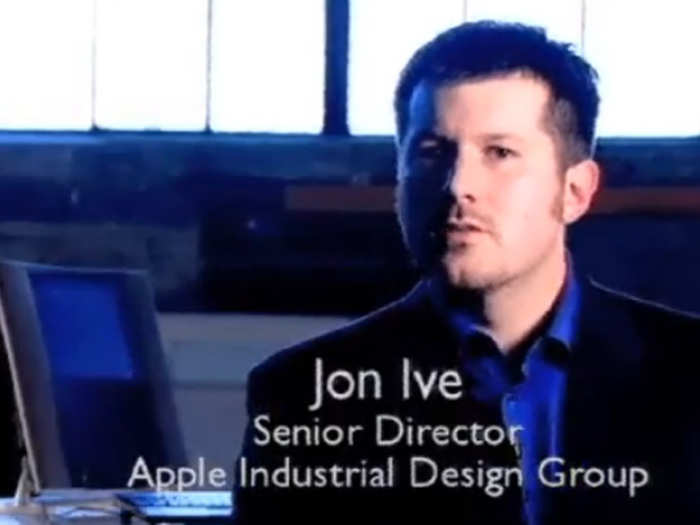
By 1996, Ive was the head of Apple's design group. But Ive said he wasn't happy around that time, since Apple and its CEO were focused more on maximizing profits rather than perfecting product designs.
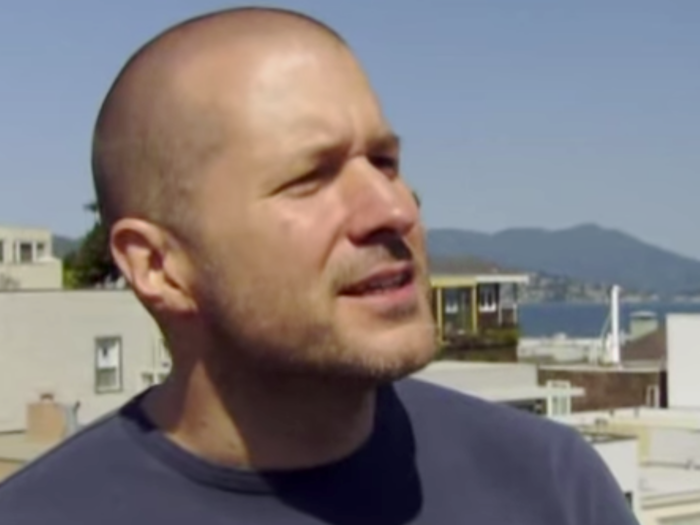
Ive told Jobs' biographer about his early days at Apple: "All they wanted from us designers was a model of what something was supposed to look like on the outside, and then engineers would make it as cheap as possible. I was about to quit."
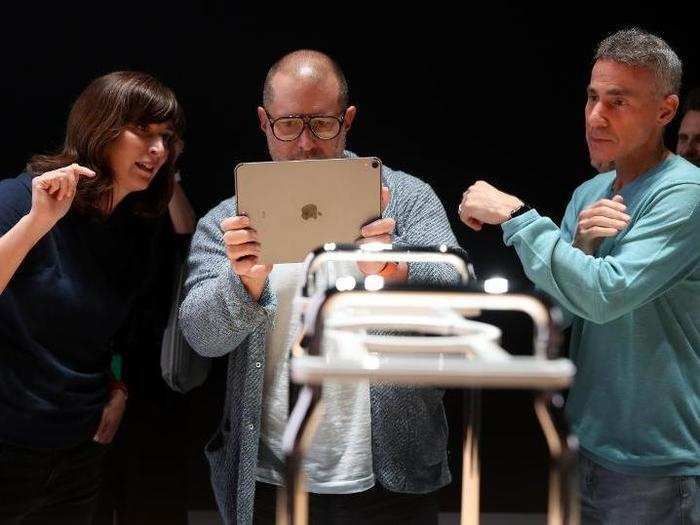
Source: "Steve Jobs," by Walter Isaacson
In 1997, as Ive was considering leaving, Steve Jobs returned to the company he helped found when Apple bought Jobs' startup, NeXT Computer. He rose to power after convincing Apple’s board to oust its CEO at the time, Gil Amelio. Jobs became interim CEO, and eventually "interim" was dropped from his title.
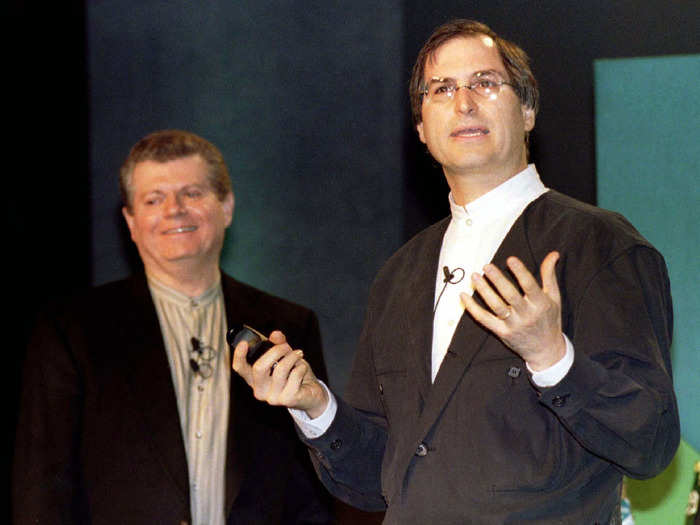
Jobs met Ive when he was touring Apple's design studio after returning to the company. Ive remembers Steve entering the studio and saying, "F---, you’ve not been very effective, have you?” — a compliment in its own way, as if Apple had not appreciated its own design team, or given them the tools to succeed.
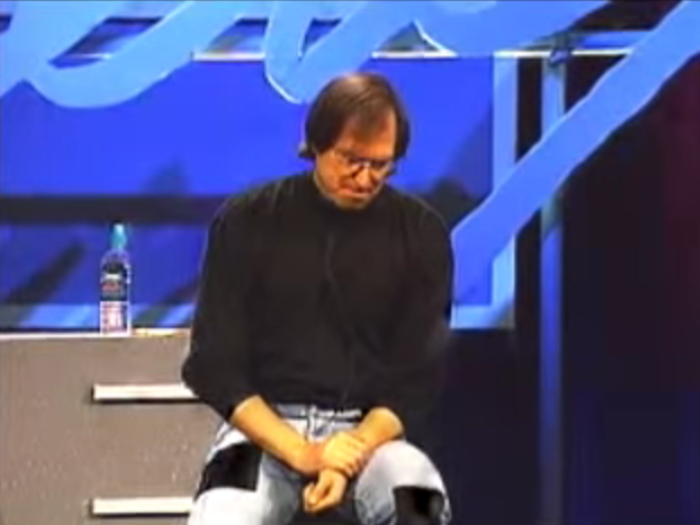
Source: The New Yorker
The two bonded quickly — according to former Apple engineer Jon Rubinstein, Ive and Jobs would regularly get lunch together, and Jobs would finish his day by dropping by the design studio to talk with Ive.
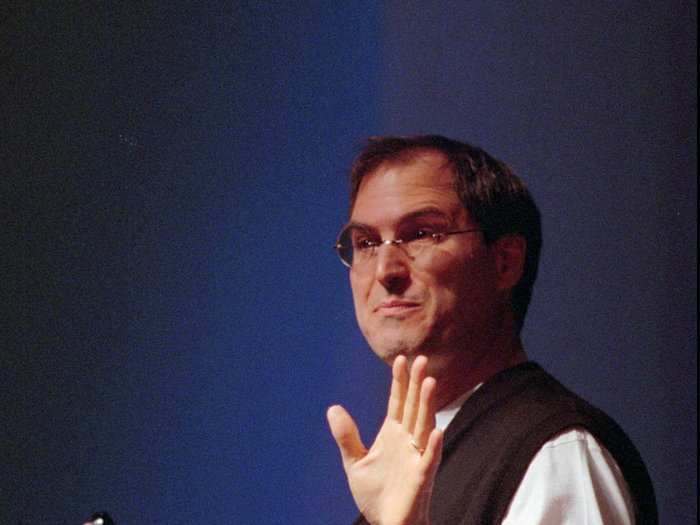
Source: "Steve Jobs," by Walter Isaacson
Jobs' wife, Laurene Powell, described their friendship to Isaacson: "Jony had a special status. He would come by our house, and our families became close. Steve is never intentionally wounding to him. Most people in Steve’s life are replaceable. But not Jony."
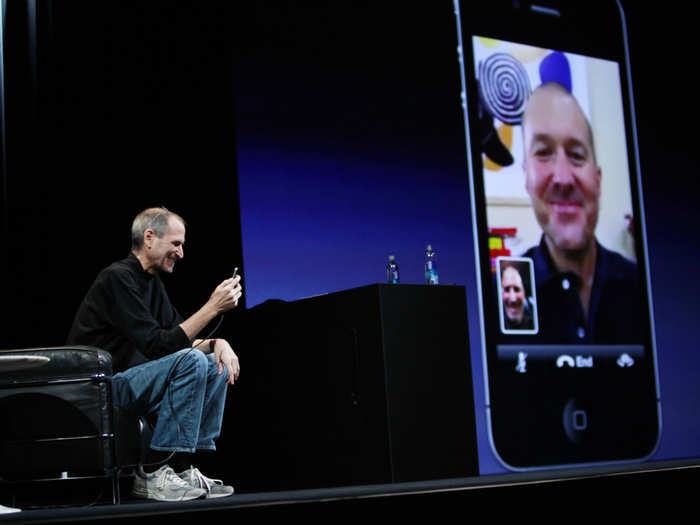
Source: "Steve Jobs," by Walter Isaacson
Jobs and Ive shared similar design philosophies: Both men believed in simplicity being "the ultimate sophistication," and the idea that less could be more. "In so many ways, we're trying to get the object out of the way," Ive said.
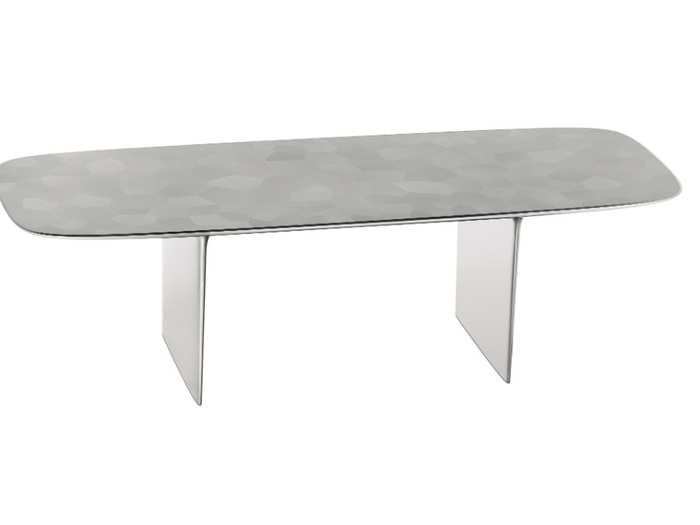
Source: Smithsonian Magazine
Jobs and Ive were focused on the complete picture. They didn't just care about how a product looked from the outside; they needed to understand the engineering process as well, so they could get rid of anything that wasn’t absolutely essential.
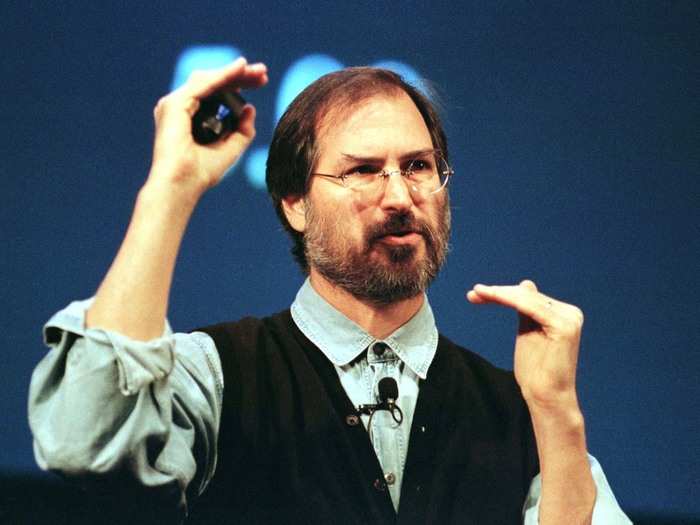
Jobs and Ive put beauty before everything. One time, Jobs and Ive were traveling in France together and came across a kitchen knife at a supply store — they were initially intrigued, but both ultimately disappointed for the same reason. Both men found a tiny bit of glue between the knife’s blade and the handle. "Steve and I care about things like that," Ive told Isaacson. "We think alike about how products should be made to look pure and seamless."
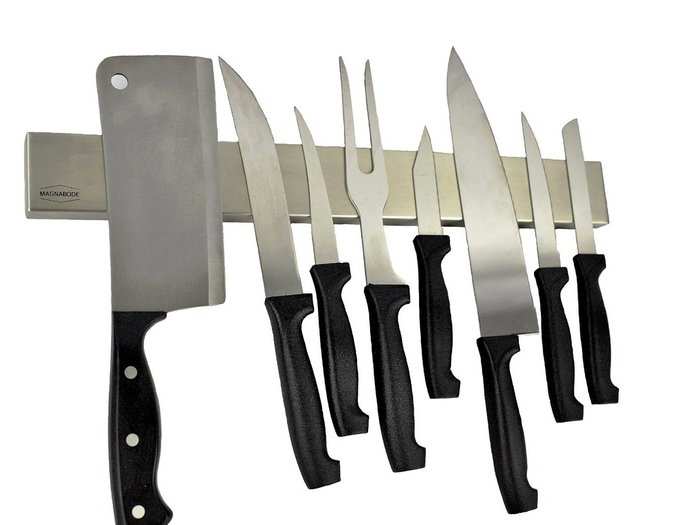
Source: "Steve Jobs," by Walter Isaacson
The first major hit from Jobs and Ive was the iMac, which Apple introduced in May 1998. Ive wanted the computer to feel futuristic, but also playful, like it was "about to hop off and go somewhere." The computer had a translucent plastic shell, so you could actually see the computer's circuit boards; Jobs insisted that everything in the computer look neat inside, as well as outside.
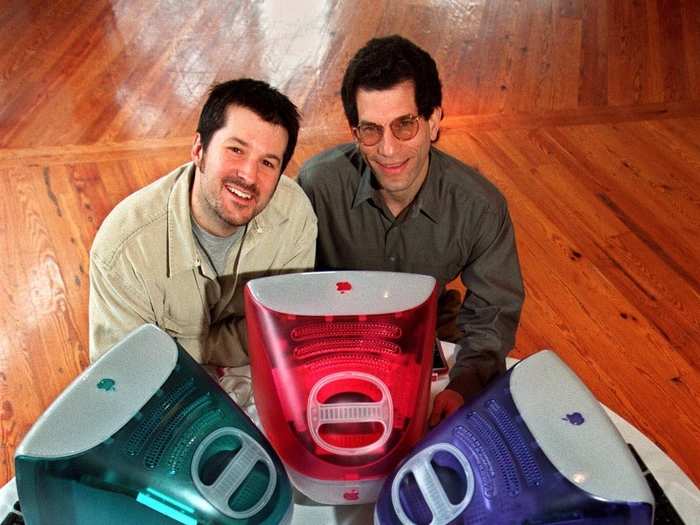
Ive and Jobs also agreed that the iMac should have a handle — even though people weren’t expected to carry it around.
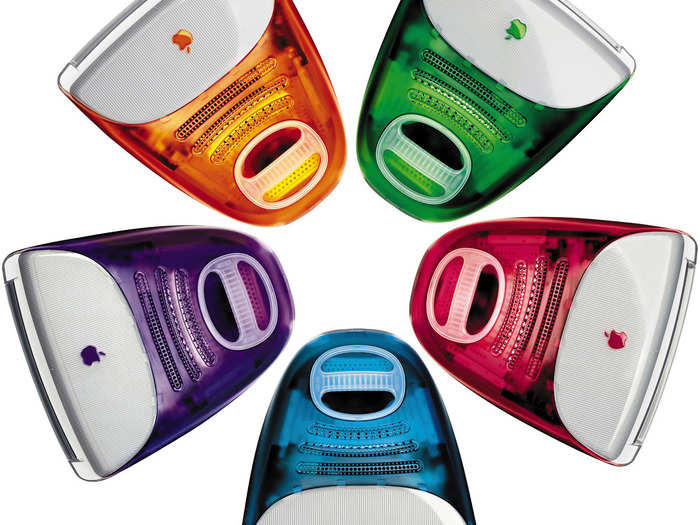
Ive told Isaacson: "I thought, if there's this handle on it, it makes a relationship possible. It's approachable. It's intuitive. It gives you permission to touch ... At the old Apple, I would have lost the argument. What was really great about Steve is that he saw it and said, 'That's cool!' I didn’t explain all the thinking, but he intuitively got it."
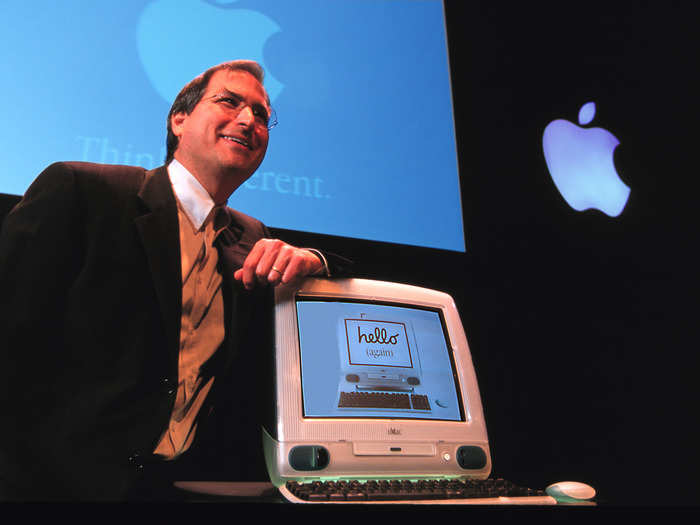
Source: "Steve Jobs," by Walter Isaacson
Jobs and Ive loved experimenting with different materials for their computers. Apple’s PowerBook G3 was made of plastic, but its successor, the PowerBook G4, came in a sleek titanium build. They redesigned the same computer two years later, in aluminum.
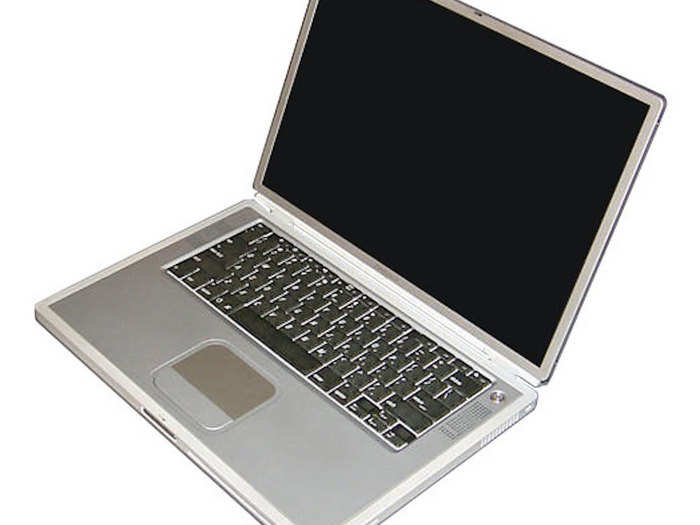
At one point, Jobs and Ive became enthralled with anodized aluminum — which was used for the iMac, the iPod Nano, and later the iPhone — where the metal was put in an acid bath and electrified so its surface could oxidize and be changed into different colors. Jobs was told that Apple couldn’t get the quantities of anodized aluminum they needed, so he had a factory built in China just for that. Jobs flew Ive out to China to oversee the whole process for about three months.
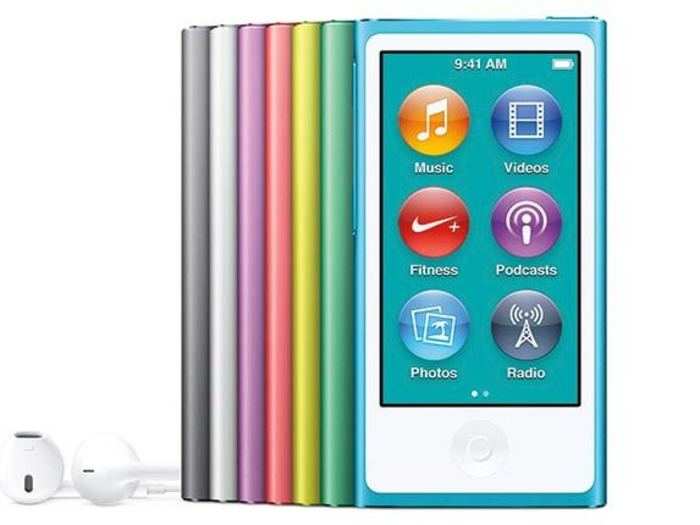
Ive told Vogue in 2018: "One of the key characteristics of how we work is that we're very involved in how you make something: You can't just design in abstract and then tell someone else to make it. You know that from the fashion designers whose work you love: they are there for every step. I've stayed for months in places where we make products. I don't know how you can be an effective designer and not do that."
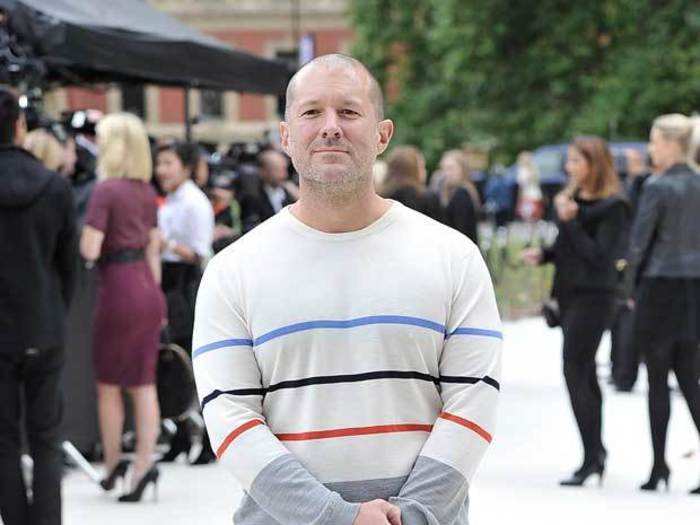
Source: Vogue
According to Jobs' wife, Laurene Powell, Jony and Steve connected so easily because Ive made products that conveyed a "feeling of gratitude that someone else actually thought this through in a way that makes your life easier. That’s what Steve was always looking for, and he didn't find it until he worked with Jony. ... They were really happy, they relished each other."
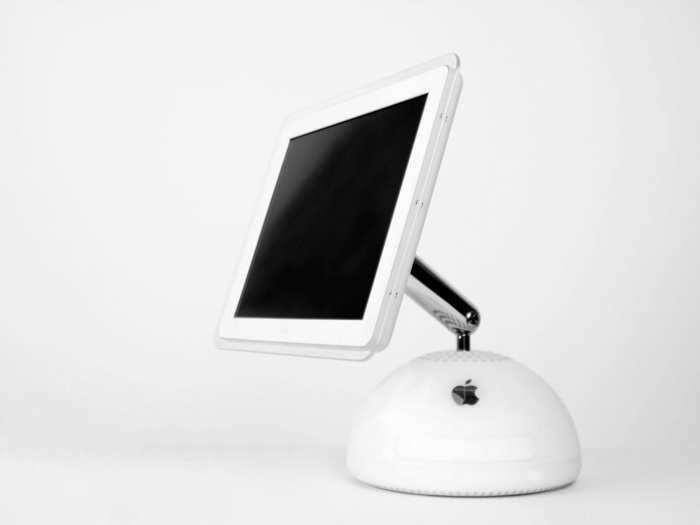
Source: The New Yorker
Jobs and Ive also saw eye-to-eye on the design of the iPod, Apple's portable music player that launched in 2001. Ive had an epiphany on his commute to work one morning: The iPod should be "pure white," with a stainless steel back. Ive wanted the iPod, as well as its headphones and wires and even the power block, to be pure white. According to Ive, "Steve got it immediately, and embraced white."
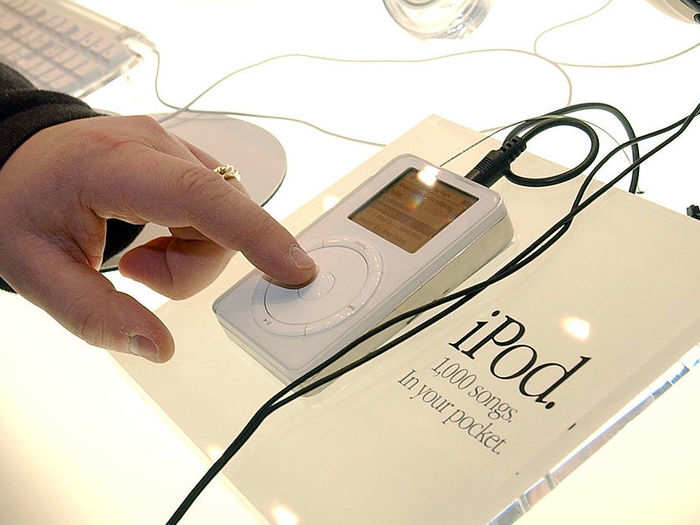
Ive told Isaacson: "There was something very significant and non-disposable about it, yet there was also something very quiet and very restrained. It wasn't wagging its tail in your face. It was restrained, but it was also crazy, with those flowing headphones. That's why I like white. White isn't just a neutral color. It is so pure and quiet. Bold and conspicuous and yet so inconspicuous as well."
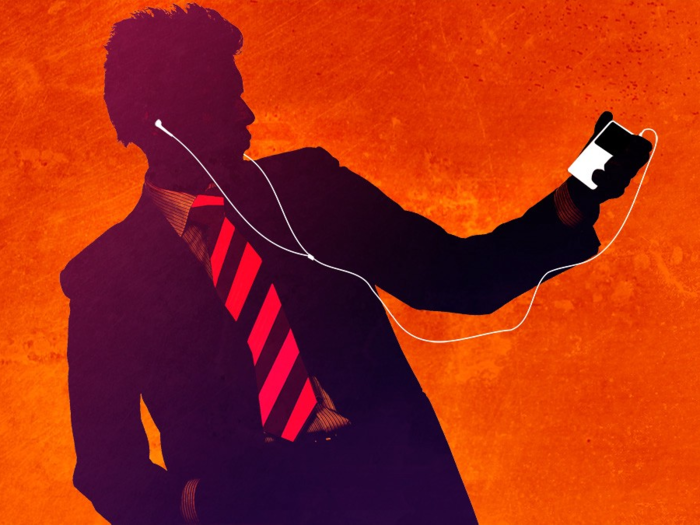
Source: "Steve Jobs," by Walter Isaacson
Jobs and Ive were both perfectionists: They were even obsessed with the packaging of Apple’s products. "I love the process of unpacking something," Ive told Isaacson. "You design a ritual of unpacking to make the product feel special. Packaging can be theater, it can create a story."
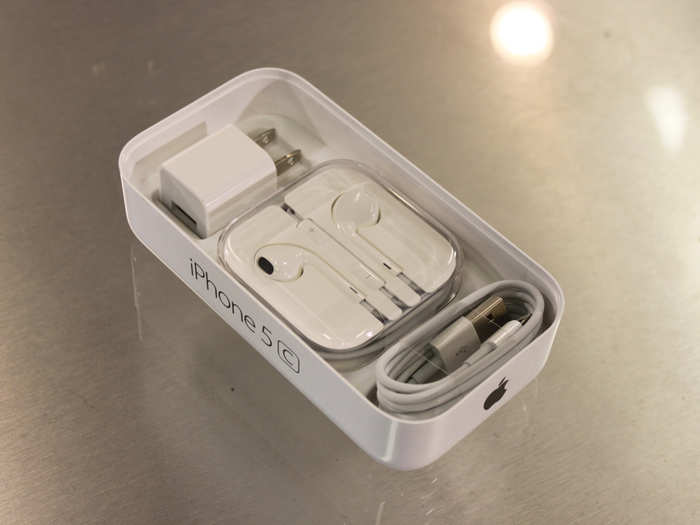
Source: "Steve Jobs," by Walter Isaacson
The two were constantly looking for ways to improve Apple’s products. Even before the first iPad went on sale, Jobs was already having ideas for the iPad 2. He shared an article with Ive about magnets, thinking it could be a fun way to include a detachable cover that, when opened, woke up the iPad "like the face of a tickled baby." This idea, of course, made it into the final product.
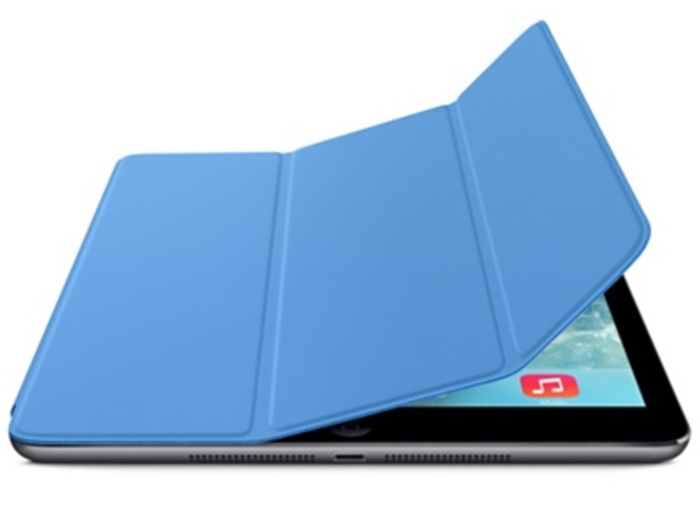
Source: "Steve Jobs," by Walter Isaacson
Jobs and Ive put design before everything — but this philosophy backfired on occasion, like when they both insisted that Apple use a solid piece of stainless steel around the iPhone 4, even though engineers expressed concerns that it could negatively impact the phone’s reception. This is how “AntennaGate” happened.
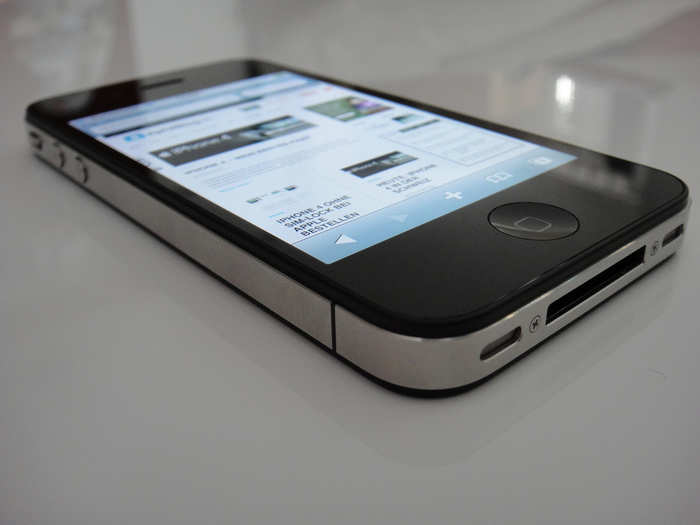
Working with Jobs, who had a famously fiery temperament, wasn't easy. Sometimes, Ive had to be gentle with his pitches to ensure his best ideas would have a chance to gain approval.
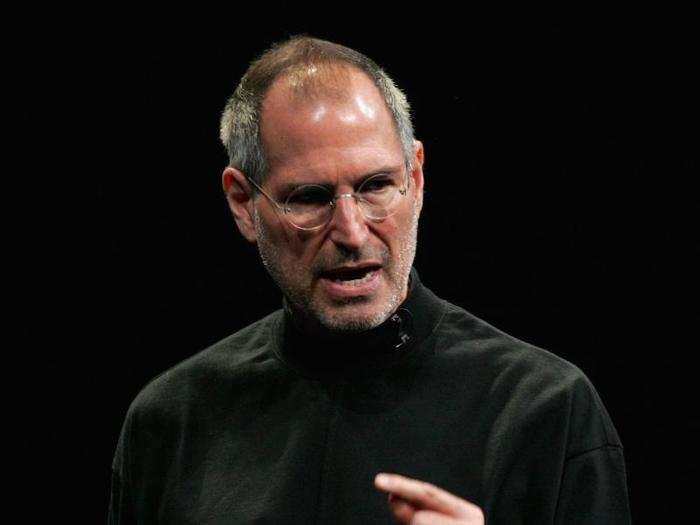
"Because Steve is so quick to give an opinion, I don't show him stuff in front of other people. He might say, 'This is shit,' and snuff the idea," Ive told Isaacson. "I feel that ideas are very fragile, so you have to be tender when they are in development."
On one occasion, Ive and his team were experimenting with screen-based gesture controls when they stumbled upon multi-touch, an invention that would serve as the foundation for the iPhone's user interface. Ive was careful to show the idea to Jobs in private, who loved it. "I realized that if he pissed on this, it would be so sad, because I knew it was so important," Ive told Isaacson.
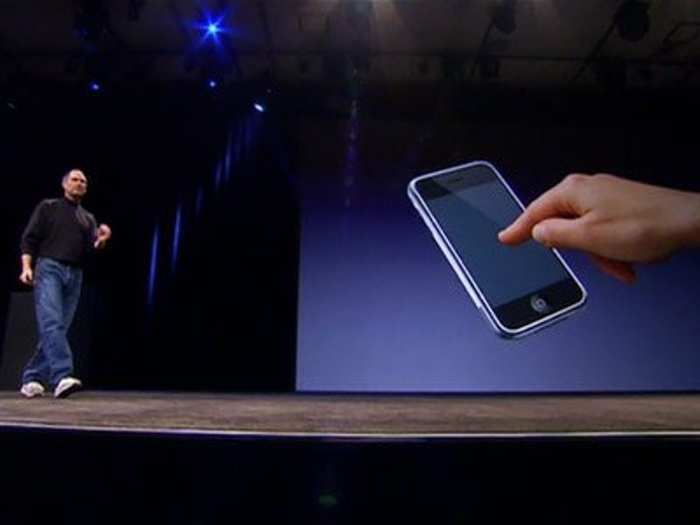
Their relationship wasn't perfect. Ive sometimes didn’t respond well to Jobs' criticisms, or like it when Jobs took credit for something Ive or his design team cooked up. "I pay maniacal attention to where an idea comes from, and I even keep notebooks filled with my ideas. So it hurts when he takes credit for one of my designs."
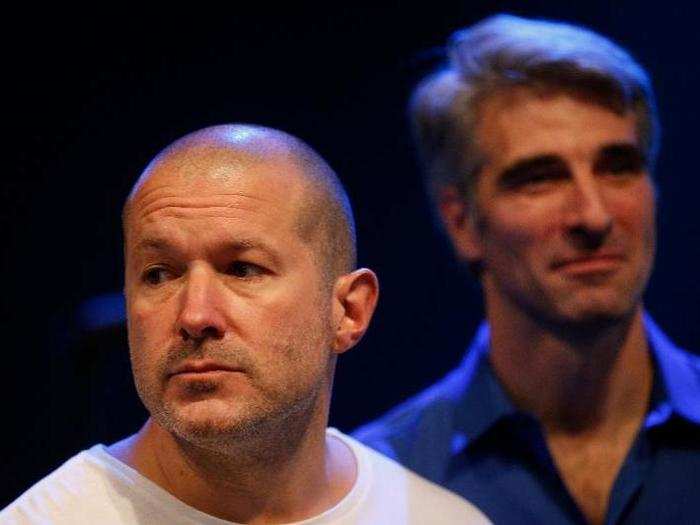
Source: "Steve Jobs," by Walter Isaacson
But Ive admits that his work, and Apple in general, would have been "completely irrelevant" and "nowhere" without Jobs. "Yes, he had a surgically precise opinion. Yes, it could sting. Yes, he constantly questioned. 'Is this good enough? Is this right?' But he was so clever. His ideas were bold and magnificent. They could suck the air from the room."

Source: The Sunday Times
Jobs also kept Ive in check — he said one of his proudest moments was telling Ive's team that they had to redo the original iPhone’s design before it launched. "I remember feeling absolutely embarrassed that he had to make that observation," Ive told Isaacson. It was for the best, even though redesigning the exterior also meant completely redoing all of the internals, including the circuit boards, processors, and antennas.
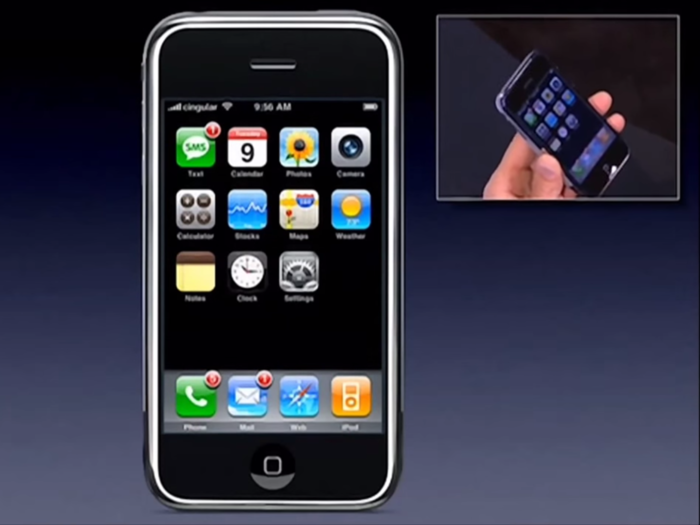
Source: "Steve Jobs," by Walter Isaacson
One of Jobs' and Ive's final collaborations was Apple Park, the company's new campus that opened in 2017. The four-story, three-million-square-foot building can hold more than 12,000 Apple employees, and features over 6,000 trees in an homage to northern California, which had been dominated by orchards and greenery before companies moved in.

Source: Business Insider
Apple Park represents so many aspects of Jobs' and Ive's relationship. It highlights the pair's obsession with glass, for instance: The building has floor-to-ceiling panels, and not a single piece of glass is straight. They are all curved and joined together to look totally seamless.
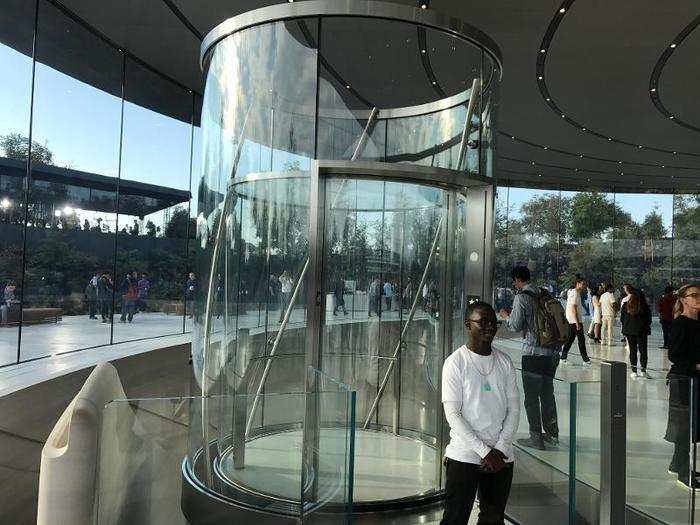
Source: The Guardian
The building looks minimalist from the outside — it’s shaped like a simple circle — but the engineering behind it was extremely complex. The building also produces its own energy, thanks to the solar panels lining its roof, and sits on 700 "huge stainless steel saucers" that protect the building’s foundation from natural disasters like earthquakes. Jobs and Ive cared deeply about not making another building, but a home that could last for generations to come.
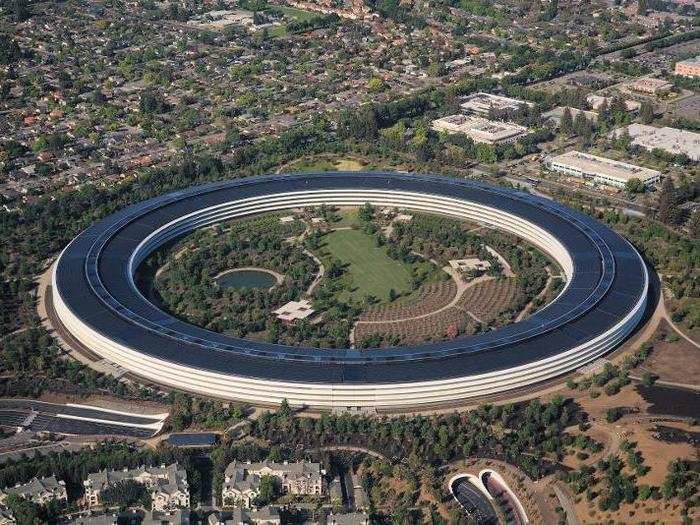
After Jobs died in October 2011, succumbing to a rare form of pancreatic cancer, the dynamic duo was no more. Ive continued on at Apple, but his enthusiasm was greatly diminished. Despite getting a new title in 2015, "chief design officer," Ive was largely absent from Apple, and was reportedly showing up to company headquarters as little as twice a week. He also began to "shed responsibilities," according to Bloomberg.
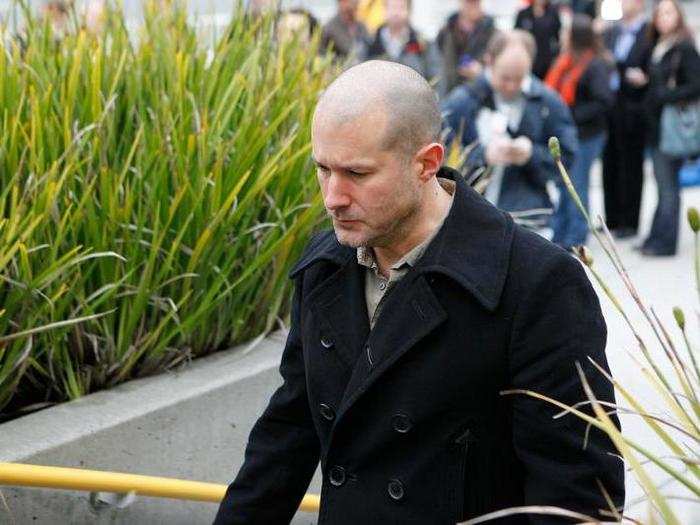
Source: Bloomberg
Over the past four years, Ive has spent a lot of time traveling, and working with fellow designers on fun side projects and charity auctions. But he "occasionally missed out on Apple product launch events, an unthinkable absence several years ago," according to Bloomberg.
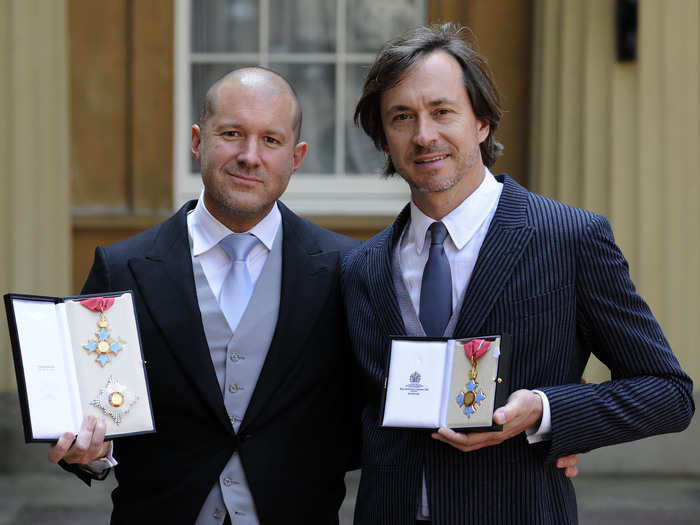
Source: Bloomberg
On June 27, Apple announced that Ive would be leaving to form a new company, called LoveFrom, of which Apple will be a client. Ive said the name LoveFrom was inspired by Jobs, who said he was motivated to make things with love and care, even though you'll probably never meet the person who bought it.
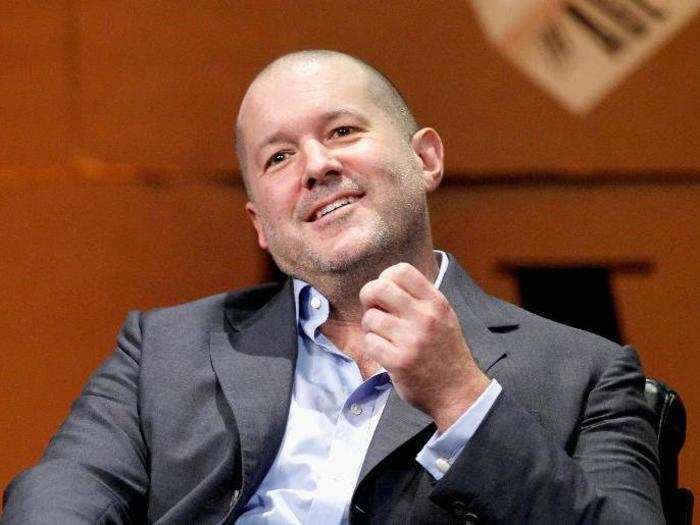
Source: The Financial Times
Jony Ive and Steve Jobs are no longer with Apple, but their influence will remain with the company forever.
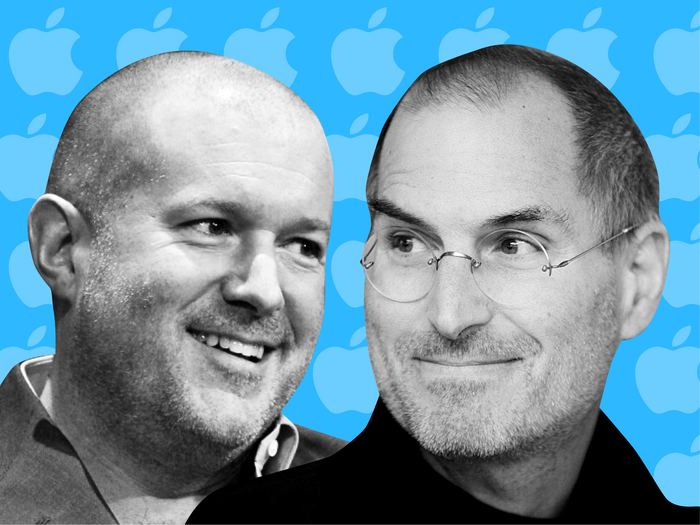
For more stories about Jobs and Ive, be sure to read Walter Isaacson's biography, "Steve Jobs," which features dozens of interviews with Jobs and his friends, family, and coworkers.
Popular Right Now
Popular Keywords
Advertisement